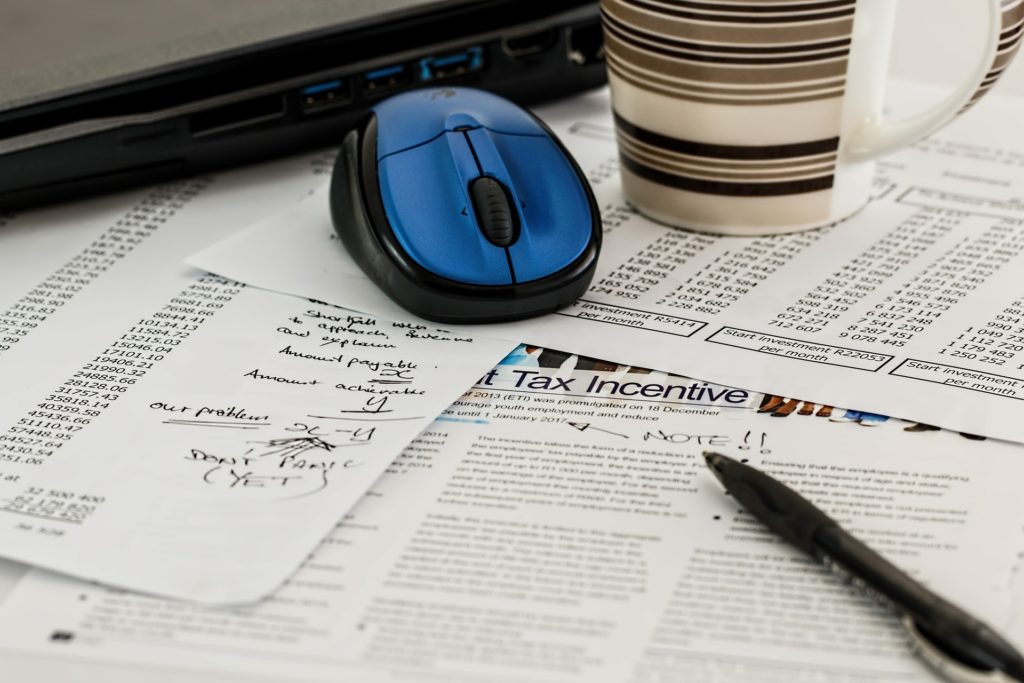Do you dread tax time every year? Getting stressed out and worried is probably something that’s not good for your health.
Instead of letting tax season beat you down, prepare for it throughout the year with the right (and practically effortless) organization.
There are two basic components you will need for tax time. One is a collection of all the receipts and invoices where you paid money out throughout the year.
The other is a monthly up-to-date record of everything in the receipts and invoices. If you have or can develop a system for these, you are 90% finished with tax preparations for the year.
Get Organized For Tax Time
Receipts and Invoices
First, let’s look at how we are going to store the receipts. We should note that you may not need these unless you are called in for an audit, but staying organized here keeps all your records straight.
There are two methods for storing receipts: paper files and electronic images.
Paper Files
There is nothing wrong with having a paper trail, and paper files will give you that. You will need a physical filing system that will contain all your papers.
This filing system can be anything from a filing cabinet to accordion-style file folders, as long as you keep them logically organized. It is usually best to file things by a given category, making it easy to retrieve later. Popular filing methods include category by month, vendor name, or a given expense category.
Electronic Images
Electronic images are different from paper files in that you keep a digital picture of the paper on your computer. Today’s phones work great for capturing a paper receipt, and there are scanner apps that will automatically crop and process a paper image so that it looks its best.
You can keep electronic image files in much the same way that you would the physical paper. For example, you can have a directory for each category of your choice for a given time and add the images as they accumulate.
Just be sure to back up your system on occasion (or use Dropbox, iCloud, or OneDrive), because you don’t want to take the chance of a drive failure wiping out your records.
Monthly Records
Now that you have the receipts themselves taken care of, it is time to keep our records up to date. Updating them can be as simple as a monthly summary of all of the receipts and invoices. Doing so makes it easy to close out the year and do a final tally of the numbers.
Physical Record book
You can keep a monthly running total for each of your categories in a physical record book. The records book can be a ledger or any other paper records book that you feel comfortable keeping up to date. You can even have a folder for your records book in your paper files, making it simple to keep everything together.
If you tend to have a low volume of receipts, you can even staple them directly to the records page for that month.
Spreadsheets
Spreadsheets are fantastic tools, and they are very adept at being an electronic version of your record book above. It is easy to set up a spreadsheet that will track your category input, and you don’t have to total everything manually.
You don’t have to spend the bucks on a Microsoft Office subscription to have a spreadsheet, either. You will find many low-cost and free alternatives available on the web. And if you tend to use a Mac, Apple has the Numbers spreadsheet program for free.
Whatever spreadsheet alternative you use, just be sure to back up the spreadsheet files in case of a computer problem and keep your records safe. Services like Dropbox, iCloud, and OneDrive are all great for this, as is a small thumb drive for manual backups.
Bookkeeping Software
You can also use any one of the many robust bookkeeping software packages available to keep up to date with your records. The actual use will vary, but the good thing about these is that they will also handle your bank accounts and other financial tasks.
Note that there could be a learning curve if you have not used a package before. These should be considered the top tier of organization for tax time.
If you spend a little time getting organized each month, you will find that tax time is relatively stress-free. In fact, you may even be looking forward to it. Okay, that was probably a bit of a reach on my part, but it will be a great deal less painful, I promise.



